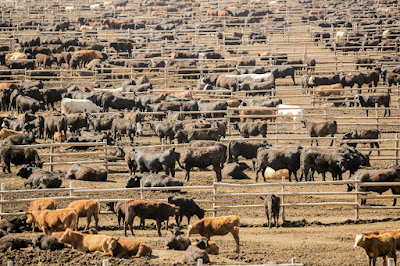What’s important in Feedlot management of beef cows?
- Gut health
- Maintaining cattle health
- Efficient growth
 |
| Feedlot management of beef cows |
Common challenges
Bovine respiratory disease (BRD): BRD is the leading cause of illness and death in U.S. feedlot cattle.
Grain overload: When cattle consume large quantities of grain, it can lead to several ailments, including bloat, ruminal acidosis, slowing of the gut, dehydration and death.
Liver abscesses: Often associated with grain overload, liver abscesses reduce beef carcass values and decrease growth efficiency.
Heat and cold stress: Extreme temperatures often lead to fluctuations in feed intake.
Tips for maximizing health and performance
- Detect BRD early.
- The majority of BRD deaths occur within the first 45 days.
- Early detection is essential for timely treatment.
- Test feed ingredients for mycotoxins.
- Mycotoxins in cattle can reduce feed intake and have a negative impact on rumen efficiency.
- Knowing the mycotoxin concentration in each individual feed ingredient will help with diet formulation to minimize mycotoxin challenges.
- Provide proper nutrition.
- Rations need to be balanced to meet nutritional requirements according to changes in the available feed ingredients.
- Check your stocking rate.
- Proper stocking rates are essential, as they ensure that all animals have access to feed.
- Keeping tabs on your stocking rate also helps you avoid increased pathogen loads, which can occur with overstocked pens.
- Conduct a slow transition from starter to finishing rations.
- This transition provides time for the rumen to adapt to higher-starch rations.
- Provide appropriate supplementation.
- Use research-proven products that support rumen efficiency.
Tags:
Beef Production
